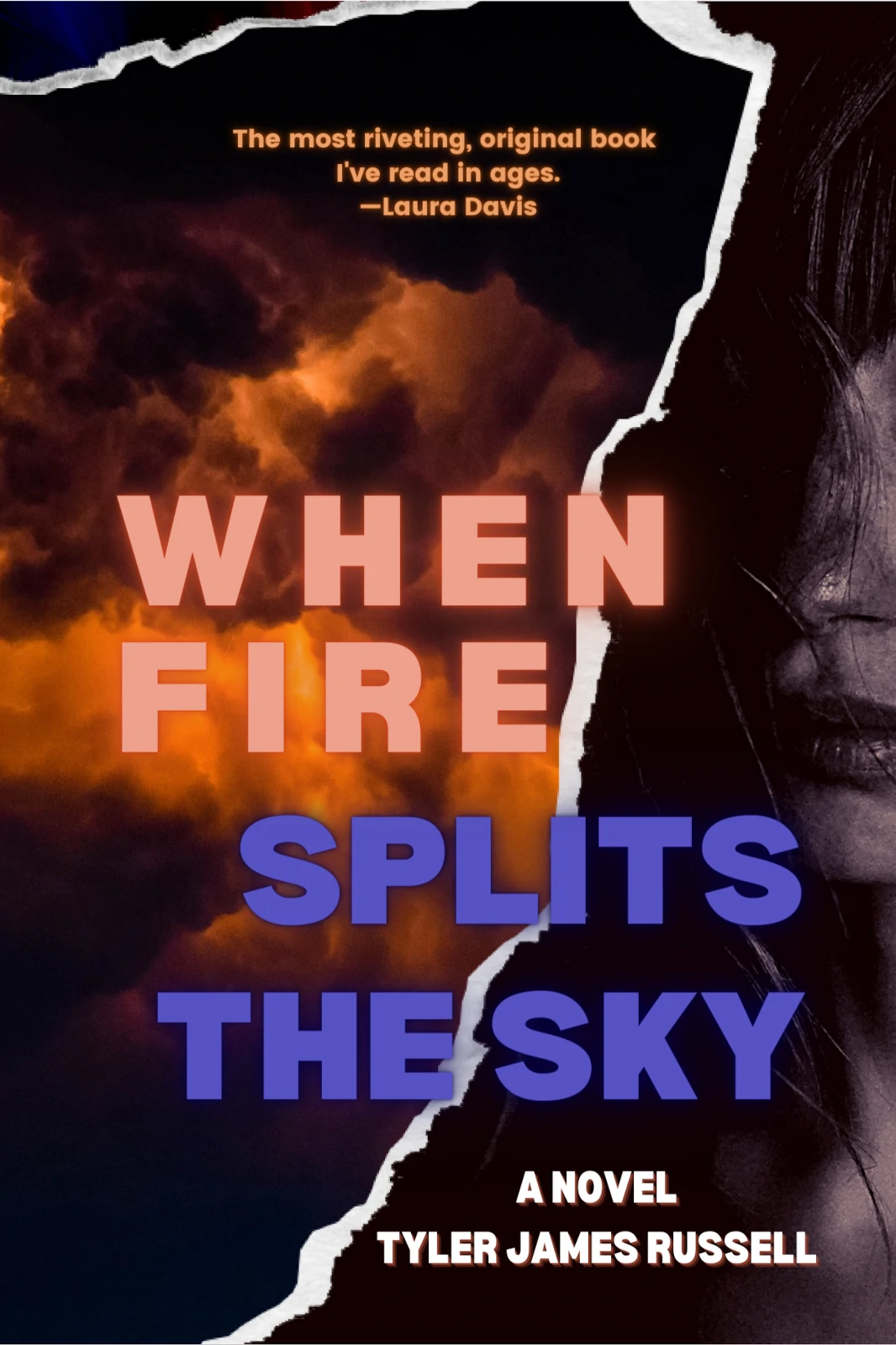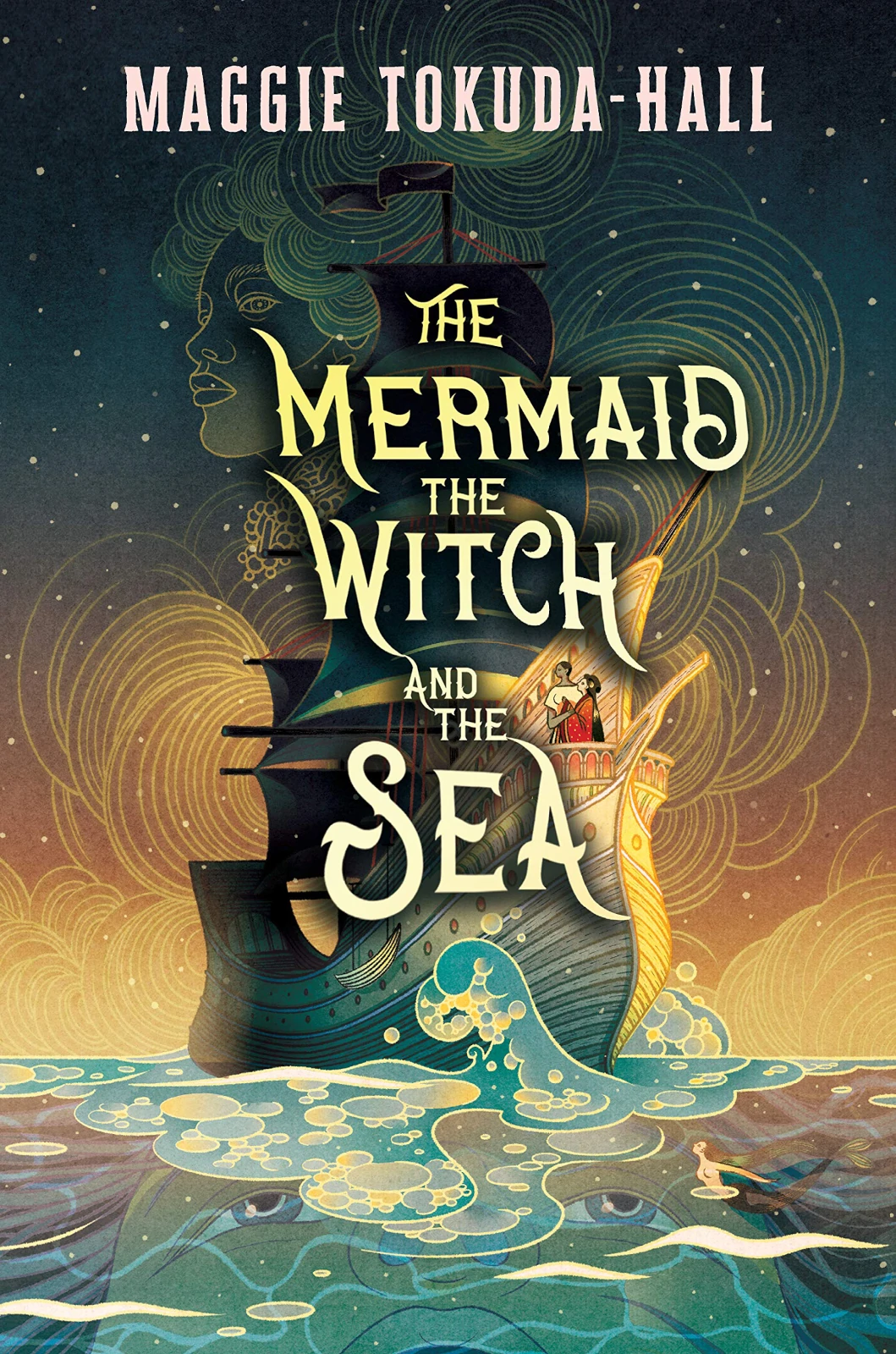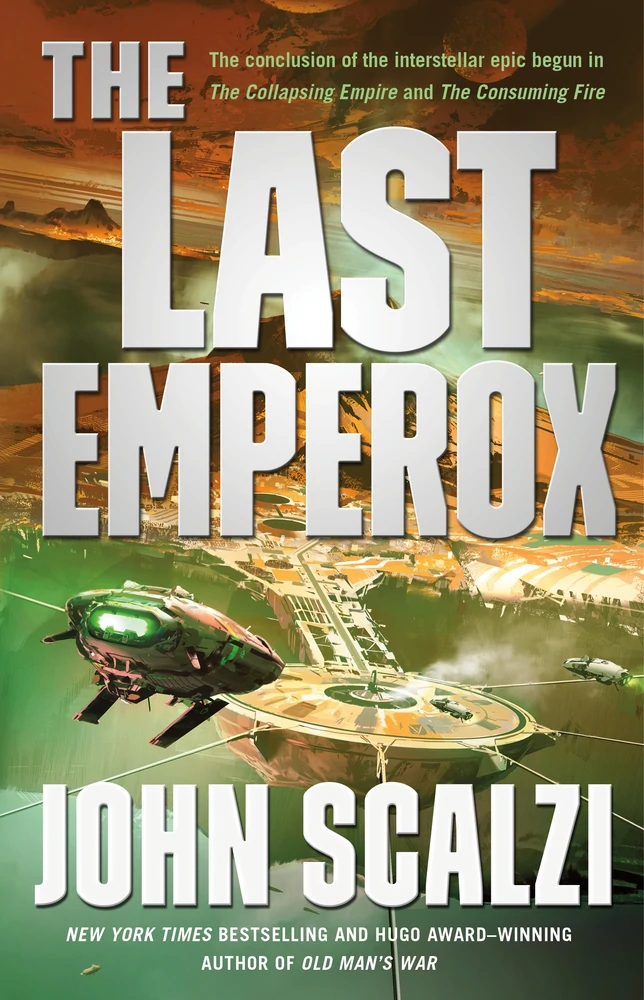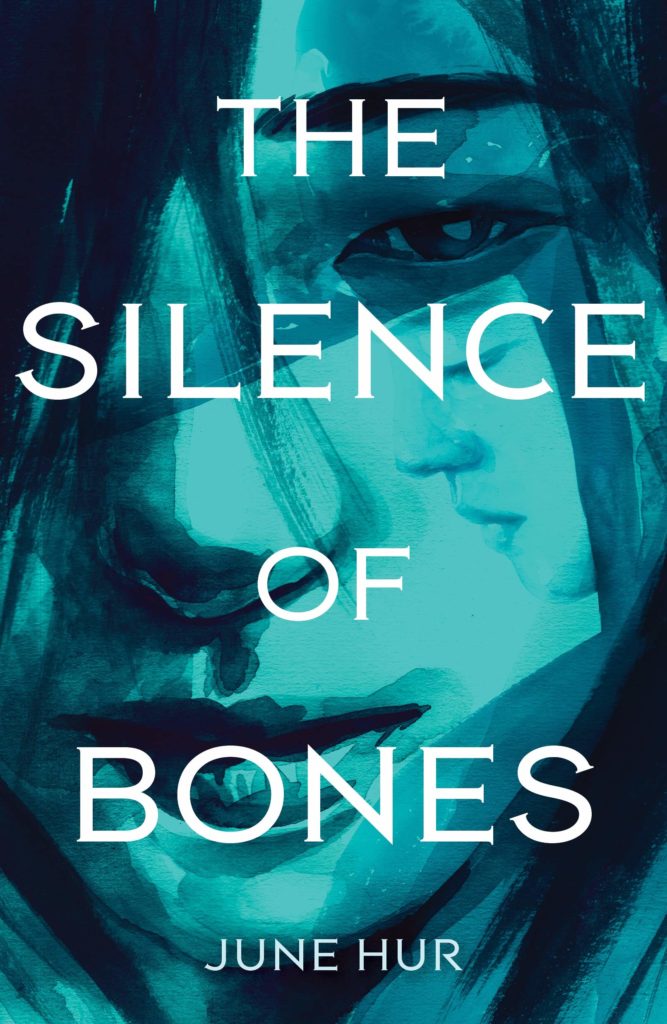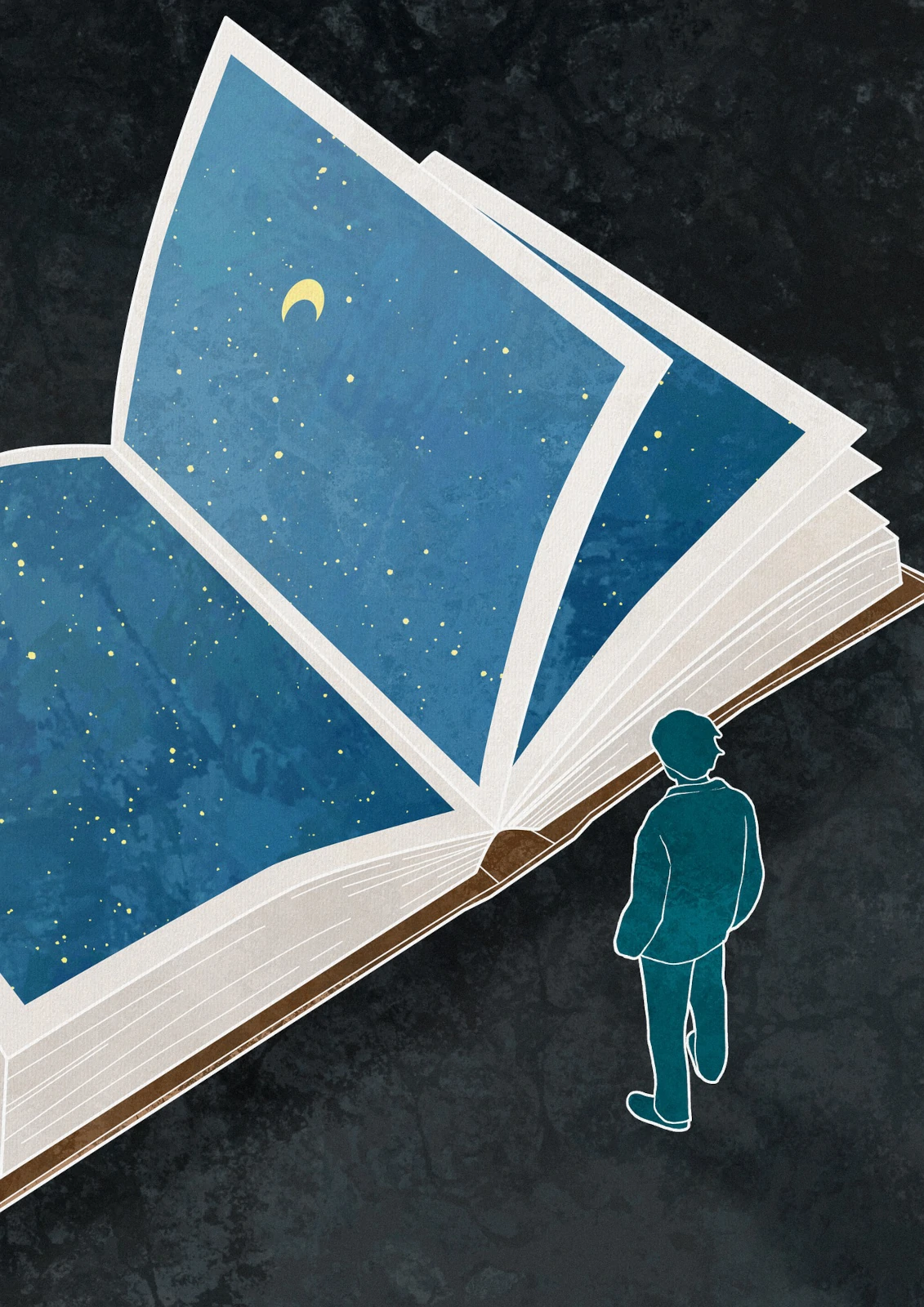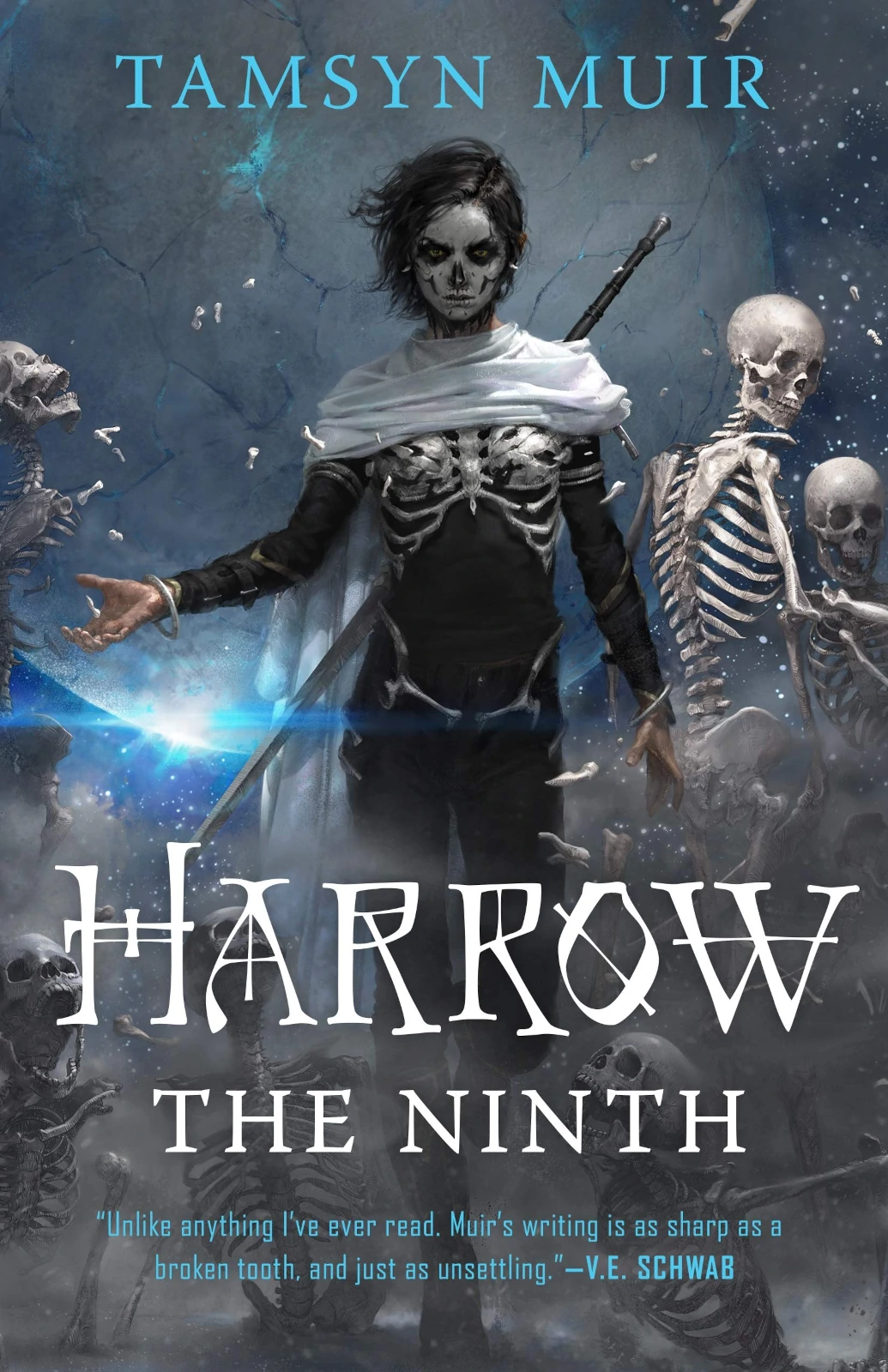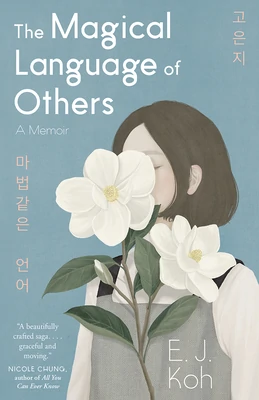Dani Hedlund: What inspired The Mermaid, The Witch, and The Sea?
Maggie Tokuda-Hall: I was a children’s bookseller for a really long time and during that time, I met a nine year old named Clare. When she was eleven, her parents hired me to be her creative writing tutor and by the time she was twelve or thirteen, it was pretty clear that she was queer. She loved fantasy books with rules, magic, murder, and high stakes. All the good stuff. But she couldn’t really find many that had that and also had queer romance. I wrote this book for her.
What I really love about this book is your unique way of world building with very defined magic and backgrounds in relation to recognizable genre tropes, all the while making those tropes your own. How did you go about developing so many elaborate backstories?
I wanted each of the nations that are in this world to be a blend of two to three countries and their histories as we know them. I’m mixed-race myself so it was fun for me to think of every single nation in this world as mixed. But that’s incredibly difficult to code when those nationalities don’t exist in the world that you’re creating. The imperial class is not just Japanese. I really intended for them to be a hybrid of British, American, and Japanese.
The other countries are based on hybrids of places I’ve traveled in and some histories I have some familiarity with. That was difficult because I wrote this for over eight years. I would leave and come back and leave and come back, and it would change so much between drafts, so keeping things straight was really difficult. Now I’ve learned, if you ever write a second world fantasy, keeping a style guide is a must. Just a second document where you’re like, here’s this rule. That rule may never actually make it into the story, but you need to know what all of the rules are for your magic, for your world, how a pecking order is established, and what country has a patriarchy or an anarchist quasi matriarchy. Ironically, I started it as historical fiction a very long time ago. I didn’t know if I could write a second world fantasy, so I started writing it as a historical story with magic in it.
Your story has this entire mythology built around how the sea interacts with everything else and the idea that the sea has memory stored in mermaids. Where did those ideas flow from?
My mom’s hobby is pulling non-native and invasive plants from California state parks because California has a climate that is really conducive to a lot of flora. It’s also a fire climate, so plants that are native to California have almost a proprietary memory of how to burn correctly. Because of human intervention, there are many non-native and invasive plants that were brought here, eucalyptus trees for example, that when lit on fire, they literally explode. They make the degree of violence that happens because of this completely natural phenomenon exponentially worse.
The idea of nature having a memory was so interesting to me. That’s the sea to me and what the sea represents. Nature as a sentient thing with a memory, but stored in the external hard drives that are these mermaids. That’s why, when they steal mermaids from the ocean, she becomes more violent. It’s a fair way to react if you think of it as an exercise in empathy. If someone keeps stealing your proprietary memory and the things that allow you to understand the world, you would probably get more volatile too.
The lore in your novel is woven in this way that no magic comes without a cost, while also maintaining the power of stories. Where did those themes originate?
It came from a couple of different places. I genuinely believe in narrative magic. I think that telling stories changes our reality in a way that isn’t quantifiable. Shortly after the 2016 election, I found the difference between the mythology of a person, a nation, and the reality of it in the places where they do and do not cross very interesting and of much consequence to me.
The idea of it all having a cost came from a lot of discussions with my husband. He was with me every day while I was drafting this, and we would talk about the magic we liked best in books. Something he came back to was the idea that magic always has a cost. That was just a cool idea because so much of this story is about power and how it’s stolen, and I thought that it never comes without a cost fit thematically. Especially since there’s so much meditation on violence, and violence is one of the other ways people assert power in this story.
You explore the fluidity of gender, identity, and how important it is to figure out who you are without those constrictions. How did you develop that line of thinking?
I always knew that Pirate Supreme was nonbinary. I felt foolish having somebody who represents the freedom and potential of the sea, that kind of adventure and that kind of power, exist in the gender binary as we know it. For Flora/Florian, who’s actually bi-gender, the question of their gender to me was a question I didn’t know the answer to. As I wrote it, I realized it didn’t require an answer, and allowing Flora/Florian to be fluid and not forced to choose was a possibility that I didn’t even consider when I first wrote this story. As I was writing it, I realized I was pushing them one way or the other in many drafts and it never felt right.
There are so many nonbinary authors who are writing amazing fantasy right now, like Annalee Newitz, Sarah Gailey, and JY Neon Yang. I would just be remiss if I didn’t mention that there are nonbinary voices and stories that are incredibly powerful and fun in second worlds as well.
What were you reading while writing The Mermaid, The Witch, and The Sea? Were their books that influenced how you brought this story to life?
I think the books that had the most effect were The Astonishing Life of Octavia Nothing by M.T. Anderson, which made me want to write young adult books; The Knife of Never Letting Go by Patrick Ness, which meditated on the long tale of violence in a way that I really appreciated. I promised myself if I ever wrote an adventure story, it would never forget the cost of violence the way that his characters never do. Graceling by Kristen Cashore was another important one because it had all the good stuff: magic, murder, rules, kissing. But in a world that was so particularly catered to the female gaze. It just was such a fresh breath of air after reading a million Tolkien-esque things that all kind of felt the same to me. Bloody Jack by L.A. Meyer is a story about a girl stowing away as a pirate and pretending to be a boy on a pirate ship. Obviously, you can see why that might have had some influence. I also wanted to make that more complicated because I thought girls surviving in a violent male environment is something we have plenty of examples of.
Gun, Germs, and Steel by Jared Diamond helped the most for world building. So did 1491 by Charles C. Mann. While I was writing this, I was traveling through South America with my husband and we drove through Colombia, just down the west coast for basically the whole continent. I was seeing the long aftereffects of colonialism the entire time. I was also reading A Darker Shade of Magic by V.E. Schwab and thought that was a really good magic system. I think she’s brilliant and did an amazing job making magic believable. Oh, and N.K. Jemisin’s Broken Earth trilogy. Those were brilliant and gave me a real hankering for twists.
When looking at how your character construction is, most everybody—including the main characters—have flaws and prejudices that they’re overcoming. How did you balance characters having flaws with the reader still really liking them?
I think it would be really fair if someone read my book and was like, I don’t like these people. I think they all do bad things that are hard to forgive and have blind spots that are completely fair to be very angry about. Evelyn is so privileged, and her previous romantic entanglement comes from someone working with her family, which means that there was a very unhealthy power dynamic in play, which is not great. My only hope is for every person that hates every character, there’s also somebody who sees themselves in some part of the messiness that makes the humanity of these people. They feel seen in some way and are not necessarily chastised, but allow themselves to see that this kind of messier part of themselves can help them question the way it works in their own life.
Is there a character that you found most relatable and easiest to write?
Evelyn has my background in a lot of ways. I grew up rich, I grew up in a predominately white environment, and so even if I felt like an outsider for whatever reason, I had so much privilege. Although even Flora/Florian and the way that they can be very harsh is something I relate to.I relate to the way that they feel gender being contextual was present especially in my late teens and early twenties as I was trying to find myself. They’re definitely the two who have the most of my own imprint on them. I had a really hard time writing Rake until I started giving him ticks that I stole from my husband. He used to be so much meaner. I like to say now that Rake is like my husband if my husband couldn’t talk about feelings and murdered people. That allowed me to see him as a person worth loving as opposed to a bad guy who does a nice thing.
Talk to me about your aspirations as a writer. Did you always think you would end up being a novelist?
As a teenager and even into college, I thought I was going to be either a visual artist or somebody who worked in galleries. I liked writing and considered it a thing that I do. Some people knit and I write sometimes. When I was in college, I took a creative writing class and I had a great professor and she was really encouraging. She pushed me really hard to be a better writer. She would give me shit about being a lazy writer in class and I still hear it in my mind when I’m writing. The greatest burn that she gave me, that I’m always thinking about, was “You write great dialogue, but it happens in outer space. It could literally be anywhere.” It was such a succinct, great way to put it and it’s something that I think about even now when I write dialogue.
It’s important because it doesn’t matter if you have good dialogue if your characters are just floating through the ether. She wanted me to apply to this creative writing program in upstate New York. She printed out the application and wrote my name on it and handed it to me after class like, “You should fill this out.” I don’t know why, but her writing my name on it was very meaningful to me and incredibly effective. I applied, I got in, and that’s when I realized, I liked writing a lot better than I like painting and seemed to be better at it too. That was when I came to a screeching halt and the visual arts stopped and I realized writing is what I’m most passionate about. My dearest and most goofy ambition is to write books across all genres, to never have a specific lane.
Did you follow the normal path everyone in publishing tells us to do, which is to publish a few short stories, leverage them to an agent, and then sell a book? Or did you just write this book and send it off?
I have a picture book that came out in 2016 called Also an Octopus. I had not published any short stories when I sold Also an Octopus to Candlewick. I got an agent, and in that week, she sold the book. Then I didn’t write for five years. I started writing some short stories now and again. I got like a couple of short stories published on small sites here and there. I feel like people give you the sequence of events that your writing career is supposed to take and the only one that I actually believe in is just get an agent. That’s the only sequence that I think is really important. Their job is to protect your career, to help you move forward effectively, and to help you direct your energies. So, write a book and get an agent. That’s a huge, long process in and of itself, and then after that, everyone’s career is totally different and takes completely different shapes. If anyone tries to tell people with a lot of earnestness that there’s a way to do it, they’re a huckster and they’re lying.
Did you query for your agent with Also an Octopus and then move this book through it or the other way around?
I queried with Also an Octopus. We knew each other because she had been a bookseller at the same company as me and told me, “When you’re ready to query for agents, if you don’t query me first, death will come for you.” I also love her and respect her and she’s one of my very good friends now. I queried her with Also an Octopus and she was like, “Great, do you have any more books?” She was not so hot on taking me necessarily with just that one, so I lied, and was like, “Totally!” She said, “Okay, send them to me.” I called out sick, went home, and jammed out two really shitty picture book scripts. She was like, “Well I’m not going to query with those. I do like the one well enough, I think it could sell.” Then she spent the next five years nagging me to write my young adult novel and six years later, I delivered.
If you were only going to say one thing with this book, what do you think it is?
It’s that only you can know your own truth. Every character in this story has had a story assigned to them and almost every single one of them has pushed it aside in one way or another. I hope that with that many different people, even the bad guys pushing away the story that they’re given and living their own truth, it is helpful to somebody who feels pigeonholed.
